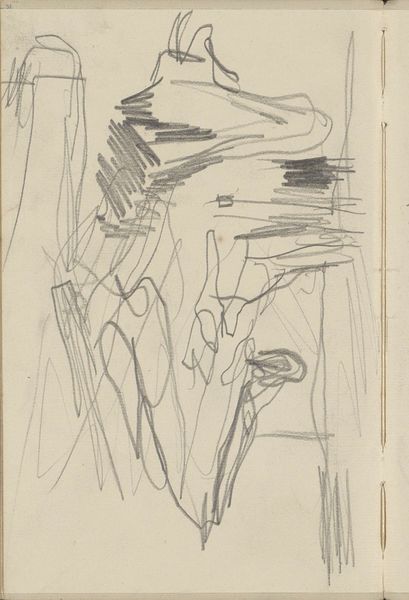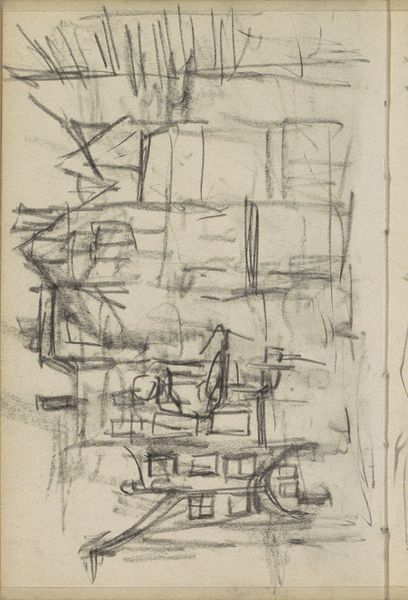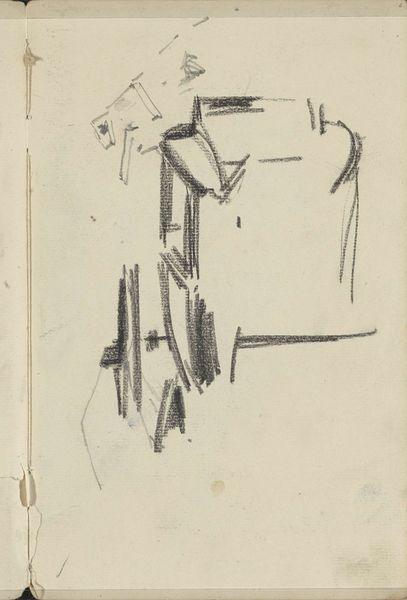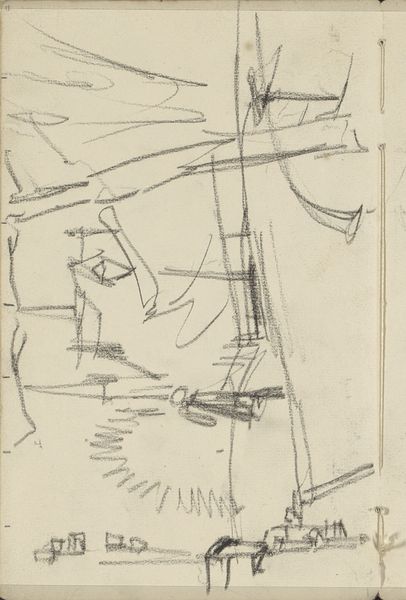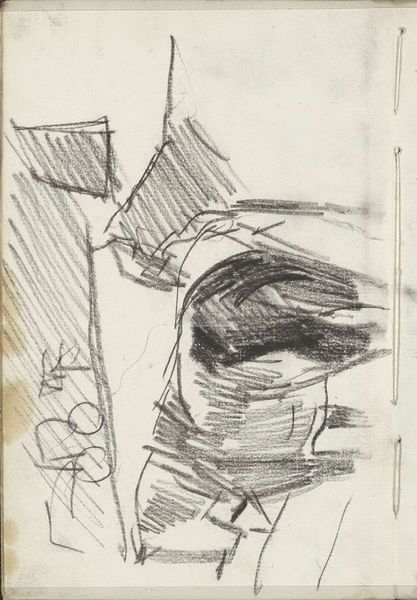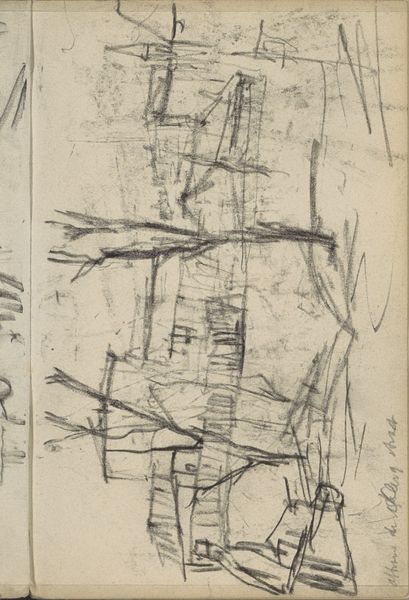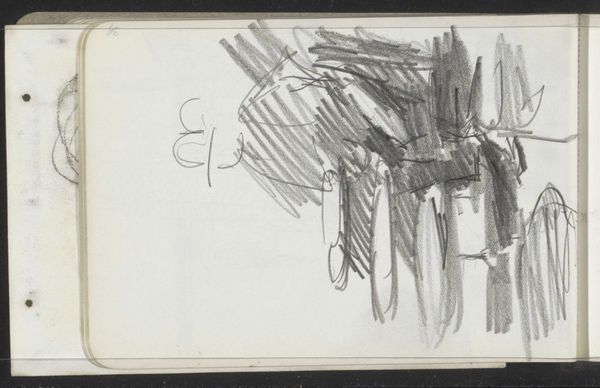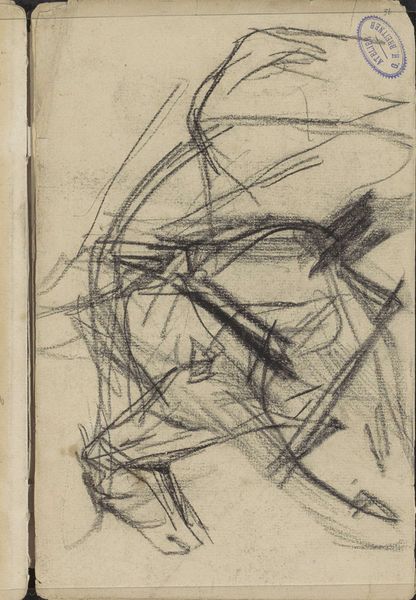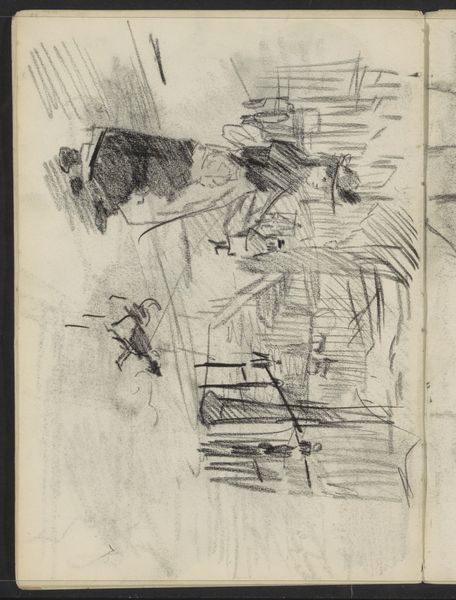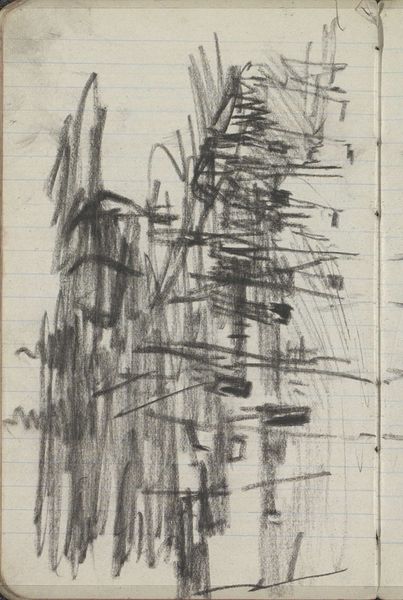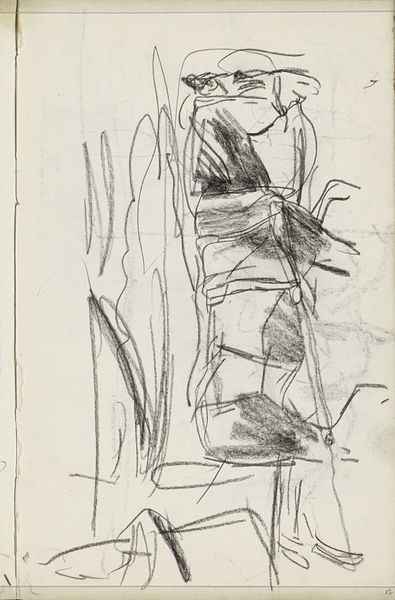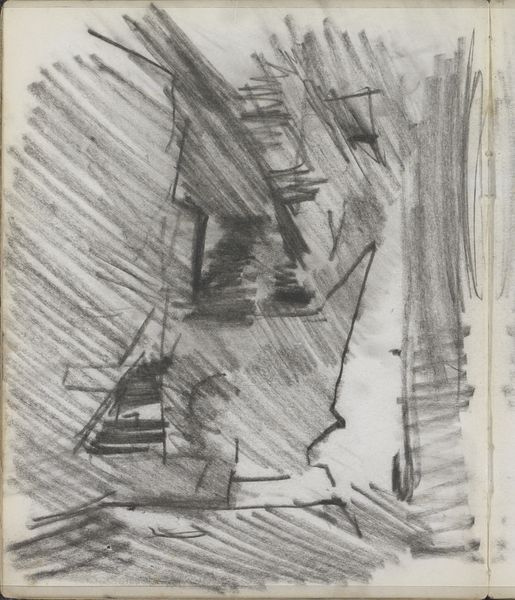
Copyright: Rijks Museum: Open Domain
Curator: George Hendrik Breitner created this graphite drawing on paper, titled "Studie," sometime between 1895 and 1898. It’s currently housed right here at the Rijksmuseum. Editor: My first impression is that this is so fleeting! It almost disappears before you can grasp it. Just a whisper of a scene in graphite. Curator: Indeed, its evocative, ephemeral quality certainly captures the spirit of Impressionism, doesn't it? There's a haziness in how it’s rendered; it speaks volumes despite being rather minimal. Editor: Well, I see something very different. I think what grabs me is the obvious act of *making* that's right there on the surface. We can really sense the artist engaging with the paper; how quickly they must have worked to get these lines down. It’s such raw process. Curator: That raw process contributes significantly to its symbolic power, I'd argue. Consider the era, the shift in thinking… Here, we see abstraction as a nascent symbolic language—not just representing reality, but exploring the artist’s emotional engagement. What emotional response does this elicit from you? Editor: I can’t say emotion. It makes me consider the social space of the studio and of drawing. Was it for his eyes only, a private space for experimentation? A piece for sale, with financial intent? I really want to know more about the type of paper used, the grade of graphite, and so on. Curator: Those details ground us in the reality of the artwork’s production. However, think about how Breitner was part of a larger movement – seeking freedom of expression in a rapidly changing world. This drawing symbolizes not just what's on the surface, but the *feeling* of that shifting reality. Editor: I suppose that I understand the abstraction might reflect the flux of society, even a resistance to clear structures – artistic as well as social. I hadn't quite considered it that way. Curator: Exactly. It pushes boundaries. Now I consider its cultural continuity and find new symbols, ideas. Thank you for helping bring it to life again through materiality. Editor: And thank you for highlighting how physical elements give life to what often stays veiled to us.
Comments
No comments
Be the first to comment and join the conversation on the ultimate creative platform.
